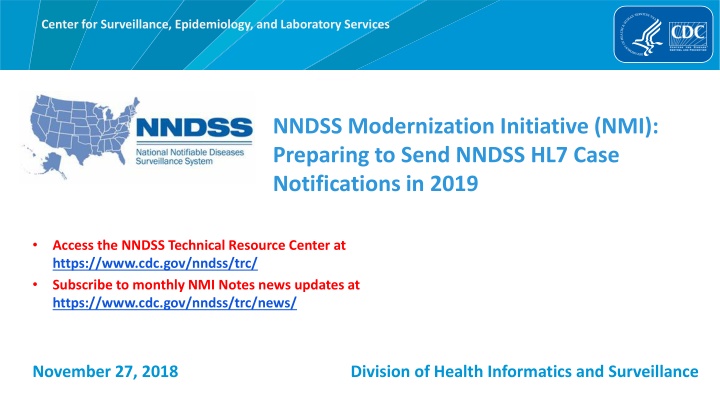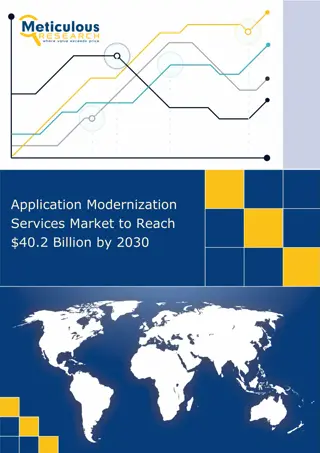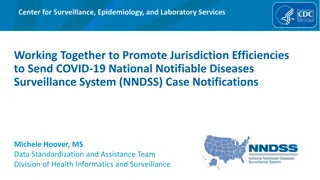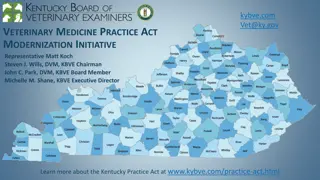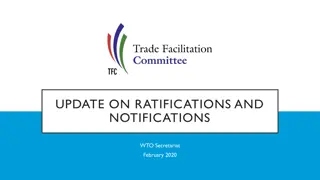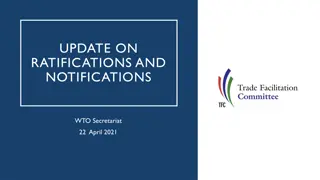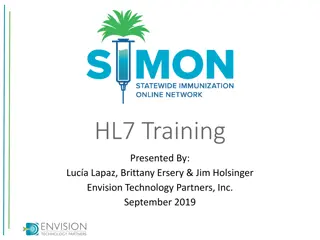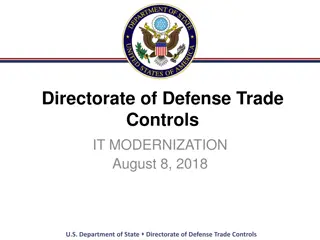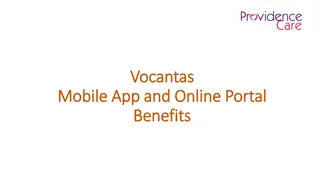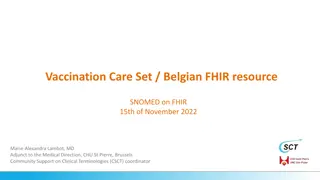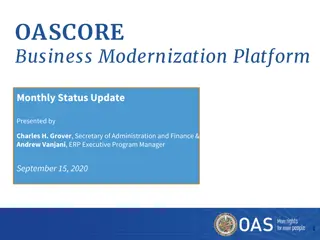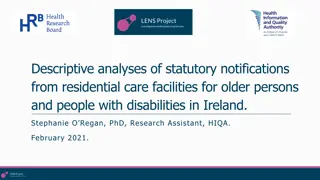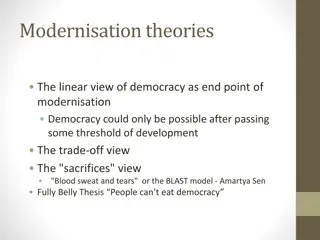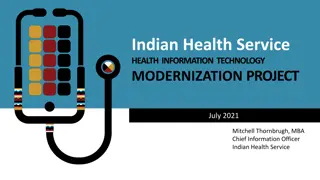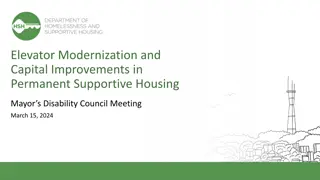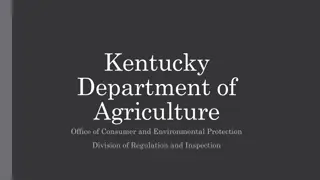Update on NNDSS HL7 Case Notifications Modernization Initiative
The Center for Surveillance, Epidemiology, and Laboratory Services is gearing up for the NNDSS HL7 Case Notifications in 2019 with progress updates, implementation statuses, and mapping guides. Stay informed to ensure smooth transitions and effective communication within the surveillance network.
Download Presentation

Please find below an Image/Link to download the presentation.
The content on the website is provided AS IS for your information and personal use only. It may not be sold, licensed, or shared on other websites without obtaining consent from the author.If you encounter any issues during the download, it is possible that the publisher has removed the file from their server.
You are allowed to download the files provided on this website for personal or commercial use, subject to the condition that they are used lawfully. All files are the property of their respective owners.
The content on the website is provided AS IS for your information and personal use only. It may not be sold, licensed, or shared on other websites without obtaining consent from the author.
E N D
Presentation Transcript
Center for Surveillance, Epidemiology, and Laboratory Services NNDSS Modernization Initiative (NMI): Preparing to Send NNDSS HL7 Case Notifications in 2019 https://www.cdc.gov/nndss/trc/ Subscribe to monthly NMI Notes news updates at https://www.cdc.gov/nndss/trc/news/ Access the NNDSS Technical Resource Center at November 27, 2018 Division of Health Informatics and Surveillance
Agenda Welcome and Announcements Tips to Keep your Notifications Flowing Changes to 2019 NNDSS Tables Questions and Answers 2
Center for Surveillance, Epidemiology, and Laboratory Services NMI Progress and Timeline Lesliann Helmus, MSPH, CHTS-CP Associate Director for Surveillance Michele Hoover, MS Lead, State Implementation and Technical Assistance
NMI Implementation Status Nov 27, 2018 NH WA VT ME AK ND MN MT MA OR NY WI RI ID SD MI CT WY PA NJ NYC IA OH CA NE DE NV IN HI IL WV UT VA DC MD CO KS MO KY NC TN SC OK AR AZ NM MS AL GA LA TX PR FL Piloting Total of 3 (states) Onboarding Total of 4 (states) Production Total of 32 (31 states + NYC) 4
Onboarding Status Message Mapping Guides (MMGs) Onboarding States Onboarding In Production States in Production AR, AZ, DE, FL, ID, MD, ND,NE, NY, OR, RI, SD, TN, TX, WI AK, AL, CA, CO, DE, FL, IA, ID, IL, KS, MA, MI, MN, MS, NY, NYC, OR, SC, UT, WI AK, AL, FL, ID, LA, MI, MN, NY, OR, TN, VA, WI, WV 5 IL, MS, PA, UT, WA 15 Arboviral v1.3 4 AZ, GA, NJ, VA 20 Gen v2 2 MA, SC 13 Hepatitis 2 MI, OR STD 2 MI, OR Congenital Syphilis AL, AK, AR, AZ, CA, CO, DE, FL, IA, ID, IL, KS, LA, MA, MD, MI, MN, MS, ND, NE, NY, NYC, OR, RI, SC, SD, TN, TX, UT, VA, WI, WV AZ, CA, GA, IL, MA, MI, MS, NE, NJ, NH, OR, PA, SC, VA,UT, WA Total # of Individual States 15 32 5 11/27/18
Center for Surveillance, Epidemiology, and Laboratory Services Tips to Keep Your Notifications Flowing Michele Hoover, MS Lead, State Implementation and Technical Assistance
Event Code Management Diana Onweh Center for Surveillance, Epidemiology and Laboratory Services Centers for Disease Control and Prevention 8
Reminder: Remove Retired Event Codes States should remove retired event codes from their transmissions. Using the correct event codes for each year is essential for CDC to classify and count the cases appropriately. States should reference the current NNDSS event code list. States can also contact the Data Operations Team to determine if they are using outdated codes. Having a strategy in place to handle retired event codes is strongly recommended. The 2019 event code list will be published soon, retiring additional event codes. 9
Retired NNDSS Event Codes By December 31, 2018, the following retired Event Codes should be corrected: Retired Event Name Retired Event Code Retired Date Current Event Name Current Event Code Paratyphoid fever 50236 Salmonellosis 11000 12/31/2017 Salmonellosis (excluding paratyphoid fever and typhoid fever) 50242 Streptococcus pneumoniae, drug-resistant, all age groups Streptococcus pneumoniae, non-drug resistant, <5 years 11720 2010 Invasive pneumococcal disease 11723 11717 Vibrio parahaemolyticus 11541 Vibriosis (any species of the family Vibrionaceae, other than toxigenic Vibrio cholera O1 or O139) Vibrio spp., non-toxigenic, other or unspecified 2007 11545 11540 Vibrio vulnificus 11542 10
Transport Management Yvette Dominique Center for Surveillance, Epidemiology and Laboratory Services Centers for Disease Control and Prevention 11
Monitoring Routine NNDSS Transmissions For messages sent to MVPS, verify that messages were received on the MVPS Dashboard. For messages sent through PHINMS, ensure Acknowledgements (ACK) are received for all transmissions. Review case counts in the NNDSS Weekly Tables. Troubleshooting Tips on the Next Slides 12
Troubleshooting of NNDSS Transmissions Check to see if the message was successfully sent out from your disease surveillance system. For NETSS messages, verify that the message file has been placed in the appropriate folder for the Secure Access Management Services (SAMS) application to pick up. If you use an integration engine (e.g., Rhapsody, Mirth) to generate/extract case notification messages from your disease surveillance system, check to make sure there are no filters in your route to prevent a case notification from being sent to CDC for the condition/disease in question. Verify your access to view the appropriate conditions in the MVPS Dashboard. If you have questions about your MVPS Dashboard access, email edx@cdc.gov. 13
Troubleshooting of NNDSS Transmissions cont. Check PHINMS console to verify that NND message is present and being picked up and sent by PHINMS. Verify that the correct PHINMS Service/Action pair are configured to send to the correct receiving system at CDC. Check PHINMS certificates to ensure they are not expired. If PHINMS is not running or not connecting, you may need to contact the PHIN Helpdesk at 800-532-9929 or phintech@cdc.gov. If you have done all the steps above, please contact CDC at edx@cdc.gov, if the issue has not been resolved. Note: States using the NBS system can find additional troubleshooting information pertaining to their system in Appendix A. 14
Alerts regarding expiring PHIN Digital Certificates The PHIN system sends the certificate owner expiration notices at 90, 60, and 30 day intervals. Sometimes the person has left the health department. Sometimes they overlook the need to act. To help improve the notification process and reduce/prevent dropped NNDSS transmissions: Jurisdictions will receive an email from edx@cdc.gov forwarding the notice of expiring certificates. The email will be: Sent for any certificates with health department or .state or .gov in the email address. Sent to NNDSS contacts and ELC HIS contacts. 15
Case Notification Management Melinda Thomas, MPH Center for Surveillance, Epidemiology and Laboratory Services Centers for Disease Control and Prevention 16
Monitoring and Managing Previously Submitted Messages With the transition to MVPS, year-to-date transmissions are no longer sufficient to update records sent to CDC. When a record previously sent to CDC is no longer a case, jurisdictions need to ensure the record is updated in CDC s system so it is not incorrectly included in statistics. States need a process in place to track: Messages that have been sent to and received by CDC. Cases that have been merged and/or rescinded. 17
Monitoring and Managing Previously Submitted Messages cont. Jurisdictions should ensure they are able to: Accommodate all merge/deletion scenarios (e.g., merging a case and then reversing the merge). Account for all de-duplication processes, ensuring the appropriate notification messages are generated and sent to CDC. Keep enough data to be able to merge and transmit all the required MMG data elements to be processed at CDC. Accommodate changes from a notifiable to a non-notifiable condition. Pull individual messages for retransmission. Start transitioning to a more real-time (e.g., daily) transmission of data. 18
Rescinding Cases Through HL7 How do I indicate that a previously transmitted case is no longer a case? Preferred Method: Case Class Status (77990-0) = Not a Case and Notification Result Status (OBR-25) = C to indicate this is a correction. Alternate Method: Re-send the case with Case Classification Status (77990-0) = Not a Case and Notification Result Status (OBR-25) = X to indicate this case is rescinded . Alternate Method for Jurisdictions unable to send case classification status of Not a Case : Case Classification Status (77990-0) = Value from initial message and Notification Result Status (OBR-25) = X to indicate this case is rescinded . For each of these methods, the notification messages should include as much of the data from the initial message as possible. If a jurisdiction runs into an issue, please send email to edx@cdc.gov. 19
Onboarding Additional Conditions Melinda Thomas, MPH Center for Surveillance, Epidemiology and Laboratory Services Centers for Disease Control and Prevention 20
Process to Add Conditions to Onboarded MMGs Public health jurisdictions who have onboarded for an NNDSS HL7 MMG and would like to onboard additional conditions for that MMG should follow this process: Jurisdiction sends email to the CDC Electronic Data Exchange email inbox at edx@cdc.gov with conditions to be onboarded. CDC onboarding team updates jurisdiction s existing information to include the new conditions. Jurisdiction transmits any existing cases of the new conditions for the current non-reconciled year(s). CDC onboarding team sends an approval email to the jurisdiction. Jurisdiction is onboarded and starts routine transmission. 21
Center for Surveillance, Epidemiology, and Laboratory Services Changes to the 2019 NNDSS Tables Ruth Jajosky, DMD, MPH Center for Surveillance, Epidemiology and Laboratory Services Centers for Disease Control and Prevention
Summary of Changes to the 2019 NNDSS Weekly Tables, as of January 2019 The current Table 1 will be retired. The information will be incorporated into current Table 2. Current Table 2 will be renamed Table 1. Diphtheria will only be included in the annual tables. CP-CRE Klebsiella, CP-CRE E. coli, and CP-CRE Enterobacter will be consolidated to CP-CRE. Candida auris, clinical will be added as a new nationally notifiable condition. Paratyphoid fever and typhoid fever will be replaced with S. Paratyphi infection and S. Typhi infection, respectively. Salmonellosis (excluding paratyphoid fever and typhoid fever) will be replaced with Salmonellosis (excluding S. Paratyphi infection and S. Typhi infection). New Table 1 Will be stratified by the Country of Usual Residence. Previous 52 week median will not be shown. Previous 52 week max and YTD cumulative counts will be retained. 23
Changes to Quarterly NNDSS Table 3 for Tuberculosis Quarterly Table 3 for Tuberculosis will be renumbered to Table 2. Country of Usual Residence stratification will not be applied to this table. Changes to Figure I: Will exclude data among non-US Residents. Only includes data among US Residents, excluding territories. 24
Implementing the Country of Usual Residence Data Element in 2019 Delicia Carey, PhD Center for Surveillance, Epidemiology and Laboratory Services Centers for Disease Control and Prevention 25
Background Data element Country of Usual Residence is included in Gen v2 MMG based on CSTE position statement (11-SI-04). Addresses disease burden in the US among non-residents who should not be counted in state-specific counts/rates. Residency is defined consistently with the Census, so numerators and denominators match. Country of Usual Residence will now be incorporated into the 2019 NNDSS data tables, starting with the weekly tables. 26
What States Should Do Ensure that your surveillance system includes the data element, Country of Usual Residence. Will be important to train your system users on how to populate the Country of Usual Residence field. A case who is a resident of another state/territory should be transferred to the state/territory of residence. If a case is a resident of another country: Provide the Country of Usual Residence. The case will be included in the new Non-US Residents row of NNDSS Weekly Table 1. 27
Mockup of Updated 2019 NNDSS Weekly Table Babesiosis Previous 52 Weeks Max~ Cum YTD 2019~ Cum YTD 2018~ Reporting Area Current week US Residents, excluding US Territories New England Connecticut Maine Massachusetts New Hampshire Rhode Island Vermont US Territories American Samoa Commonwealth of Northern Mariana Islands Guam Puerto Rico U.S. Virgin Islands Non-US Residents Total TABLE I. Weekly cases*+ of notifiable diseases, United States, U.S. territories, and Non US-Residents weeks ending Month Day, Year, and Month Day, Year (WEEK XX) NC NP 28
Subscribe to monthly NMI Notes news updates at https://www.cdc.gov/nndss/trc/news/ Access the NNDSS Technical Resource Center at https://www.cdc.gov/nndss/trc/ Request NNDSS technical assistance or onboarding at edx@cdc.gov Next NNDSS eSHARE is January 15, 2019 details at https://www.cdc.gov/nndss/trc/onboarding/eshare.html For more information, contact CDC 1-800-CDC-INFO (232-4636) TTY: 1-888-232-6348 www.cdc.gov The findings and conclusions in this report are those of the authors and do not necessarily represent the official position of the Centers for Disease Control and Prevention. 30
Center for Surveillance, Epidemiology, and Laboratory Services Appendix A: Troubleshooting NNDSS Transmissions for NBS States
NBS Troubleshooting NBS Queue Check "Approval Queue for Initial Notifications" on NBS Home Page to see if notification is still pending approval. Verify that the MsgOutProcessor batch process ran since the notification was first created. You may need to run it manually from a CMD prompt to verify it runs without errors: x:\wildfly-10.0.0.Final\nedssdomain\Nedss\BatchFiles\MsgOutProcessor.bat Verify that all NND route components are running in Rhapsody (only applies to TB/Varicella/Page Builder investigations). Verify that the Nationally Notifiable Disease (NND) flag for the condition is set to Yes by going to System Management/Manage Condition. 32
NBS Troubleshooting, contd NBS Queue Verify that there are no exclusion criteria in Rhapsody for filtering the disease/condition to prevent case notification from being sent to CDC Verify contents of the Rhapsody Error Queue (only applies to TB/Varicella/Page Builder investigations). Run a report to look for notification failures in Reports/Template Reports/Default Report Section/Notification Activity Log Line Listing. Check PHINMS console to verify that NND message is present and being picked up and sent by PHINMS. If PHINMS is not running or not connecting, you may need to contact the PHIN Helpdesk at 800-532-9929 or phintech@cdc.gov. In the NBS UI, view the relevant investigation, click "Edit" and then "Submit" to create a new notification message. If the Create Notification button is available click that to create an initial notification message (may require approval). If a new notification was created in step 10, return to step 1 and run through troubleshooting steps again. 33
